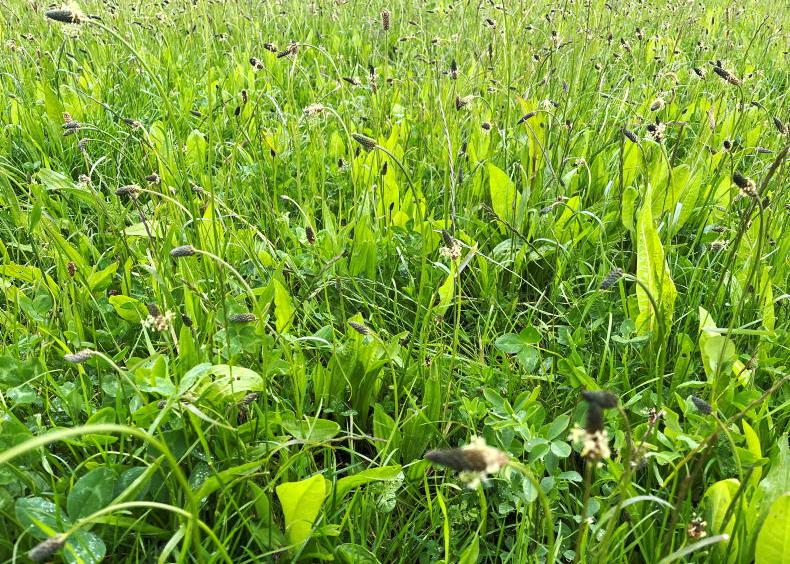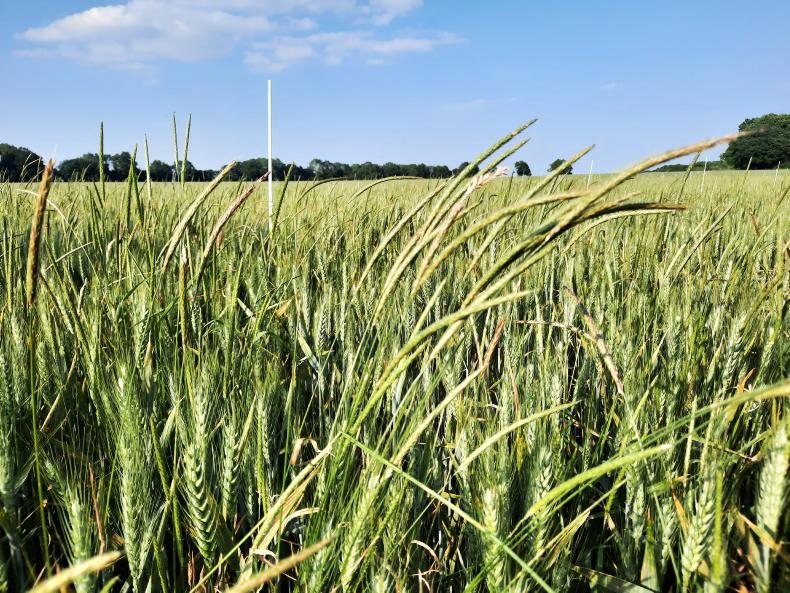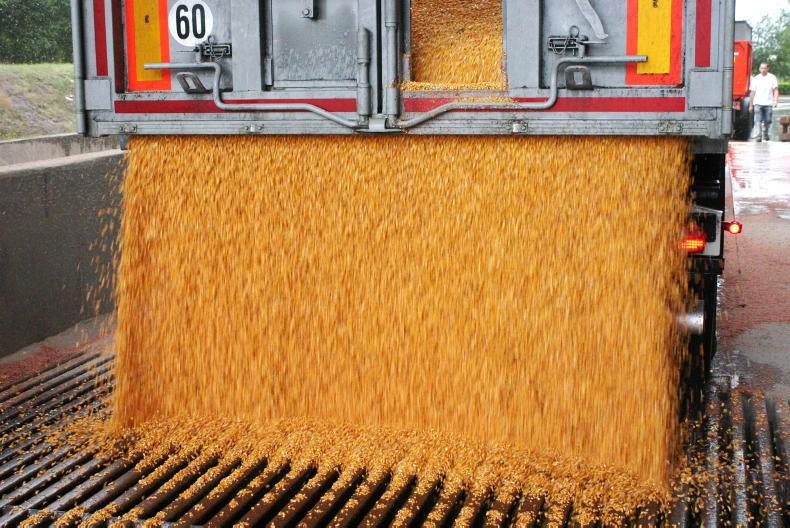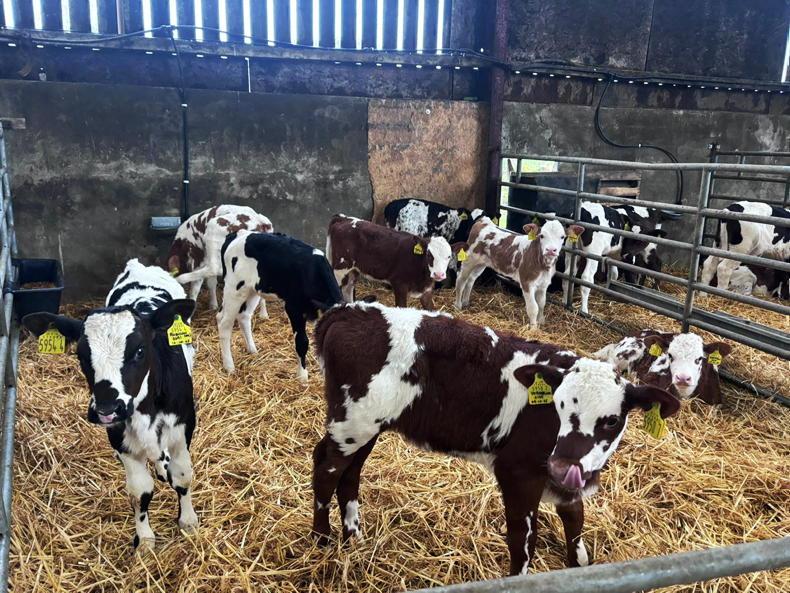Interest in growing forage on contract is on the rise and as input prices increase, so too does this interest.
However, a lot of risk falls on the producer, so it’s important that agreements are made with people you trust.
Lisa O’Toole has just completed research into this subject as part of the Teagasc Walsh Scholarship Programme.
She noted that of the farmers she surveyed, who were mainly in the north midlands and north-east of the country, about 9% were growing forage for another farmer, but most have informal arrangements. For instance they may have been selling grass-silage.
This might not involve much risk, but if a farmer approaches you to grow a crop of maize with high seed, fertiliser and plastic costs, then there is huge risk involved and a fear on the grower’s side that a good grass year comes and the maize is abandoned.
Agreements of some form or another are important in this case, but trust is the first and most important thing that needs to be established.
Both parties must trust each other and it is always advisable to have a written agreement, if nothing else, to have payment dates, area and tonnage to hand, but in the case of a new contact, then this written agreement is very important as it gives some certainty.
Both parties will no doubt “suss” each other out first, but a written document makes everything clear.
The basics of the document should include the agreed acreage to be grown, the expected yield, how the crop will be weighed and payment dates.
It is strongly advisable that a down payment is provided and that payment dates are agreed beforehand – this might be three or four payments throughout the season or an agreement that the buyer pays for the seed and plastic, for example.
The contract should list how many instalments will be paid and how much each instalment will be.
It should also be agreed before planting who is paying for the harvest and transport of the crop. This needs to be factored into the price if the grower is paying.
Quality
When it comes to quality, Lisa is not a fan of implementing price deductions for quality, as farmers genuinely trying to grow a good crop have very little control over quality.
There is also the issue around who pays for testing, how many tests are carried out and whether the payment is delayed in the meantime.
Lisa outlined that once the grower plants on a suitable site, grows an appropriate variety, manages the crop appropriately and aims to harvest at the right time, there is not much more they can do, but again, this should be stated in the contract.
The variety or varieties to be grown should be listed on the contract, if the crop is to be grown with or without plastic, that it will be planted on a suitable site and that every effort will be made to plant and harvest the crop at appropriate dates. Again, this comes back to trusting that the grower will do their best to grow a good crop.
Weighing
When it comes to weighing, Lisa explained that if there is a weighbridge on the farm, then all loads should be weighed. Even if the payment is per acre, it is still good practice to get an accurate yield record.
If the site is far away from a weighbridge, then agree beforehand what trailers will be weighed.
Will it be one in every five or one in every three? Distance will be an issue here, but consider that a change in field can result in a change in yield, as can a change in variety.
Importing slurry
The importation of slurry or farmyard manure is often talked about when it comes to growing maize on contract, but from Lisa’s work, she noted that there is very little slurry being imported onto farms under these arrangements.
While slurry was once seen as a problem for some farmers, it is now seen as a valuable asset given the current high fertiliser prices and livestock farmers are not willing to part with it too easily.
Flexibility
Every contract should outline the need for flexibility. Weather will impact on planting and harvesting, for example. If done right, these arrangements can benefit both the livestock and the tillage farmer.
The livestock farmer will have a high-quality feed and the potential to reduce concentrate feeding, while also freeing up grass or avoiding the need to look for land to rent. Meanwhile, the tillage farmer will have a break crop in their rotation, some cashflow during the season and if more of these arrangements develop, then land may become more accessible.
What should a contract state?
Acreage to be planted.Expected tonnage.Agreed price per acre or tonne.How many payment instalments are to be made.State the amounts and dates of these instalments.Expected planting and harvest dates (between certain dates).Variety.To be planted with or without plastic.Who pays for harvesting and transport.Weighbridge to be used and number of trailers to be weighed.Growing forage on contract has huge potential to improve the sustainability of Irish agriculture. Grass, maize, beet, whole crop and forage crops such as forage rape or kale can all provide valuable feed for animals over winter.
This can result in a cut in the need for concentrates, reduced slurry storage and housing requirements in some cases and a smaller land base.
For the tillage farmer break crops are valuable, as are cover crops and if light animals graze these crops over winter it can result in very little damage to soil over winter and the nutrients from the crop are made more available, while the cover is also grazed off.
Crops like maize are expensive but getting a payment plan in place can help with cash flow during the season. If tillage farmers are growing these crops for livestock farmers it can also reduce the amount of grassland needed on those livestock farms and land can be freed up for tillage farmers who are farming with a much lower carbon footprint, which could help reduce agriculture’s overall emissions targets.

Interest in growing forage on contract is on the rise and as input prices increase, so too does this interest.
However, a lot of risk falls on the producer, so it’s important that agreements are made with people you trust.
Lisa O’Toole has just completed research into this subject as part of the Teagasc Walsh Scholarship Programme.
She noted that of the farmers she surveyed, who were mainly in the north midlands and north-east of the country, about 9% were growing forage for another farmer, but most have informal arrangements. For instance they may have been selling grass-silage.
This might not involve much risk, but if a farmer approaches you to grow a crop of maize with high seed, fertiliser and plastic costs, then there is huge risk involved and a fear on the grower’s side that a good grass year comes and the maize is abandoned.
Agreements of some form or another are important in this case, but trust is the first and most important thing that needs to be established.
Both parties must trust each other and it is always advisable to have a written agreement, if nothing else, to have payment dates, area and tonnage to hand, but in the case of a new contact, then this written agreement is very important as it gives some certainty.
Both parties will no doubt “suss” each other out first, but a written document makes everything clear.
The basics of the document should include the agreed acreage to be grown, the expected yield, how the crop will be weighed and payment dates.
It is strongly advisable that a down payment is provided and that payment dates are agreed beforehand – this might be three or four payments throughout the season or an agreement that the buyer pays for the seed and plastic, for example.
The contract should list how many instalments will be paid and how much each instalment will be.
It should also be agreed before planting who is paying for the harvest and transport of the crop. This needs to be factored into the price if the grower is paying.
Quality
When it comes to quality, Lisa is not a fan of implementing price deductions for quality, as farmers genuinely trying to grow a good crop have very little control over quality.
There is also the issue around who pays for testing, how many tests are carried out and whether the payment is delayed in the meantime.
Lisa outlined that once the grower plants on a suitable site, grows an appropriate variety, manages the crop appropriately and aims to harvest at the right time, there is not much more they can do, but again, this should be stated in the contract.
The variety or varieties to be grown should be listed on the contract, if the crop is to be grown with or without plastic, that it will be planted on a suitable site and that every effort will be made to plant and harvest the crop at appropriate dates. Again, this comes back to trusting that the grower will do their best to grow a good crop.
Weighing
When it comes to weighing, Lisa explained that if there is a weighbridge on the farm, then all loads should be weighed. Even if the payment is per acre, it is still good practice to get an accurate yield record.
If the site is far away from a weighbridge, then agree beforehand what trailers will be weighed.
Will it be one in every five or one in every three? Distance will be an issue here, but consider that a change in field can result in a change in yield, as can a change in variety.
Importing slurry
The importation of slurry or farmyard manure is often talked about when it comes to growing maize on contract, but from Lisa’s work, she noted that there is very little slurry being imported onto farms under these arrangements.
While slurry was once seen as a problem for some farmers, it is now seen as a valuable asset given the current high fertiliser prices and livestock farmers are not willing to part with it too easily.
Flexibility
Every contract should outline the need for flexibility. Weather will impact on planting and harvesting, for example. If done right, these arrangements can benefit both the livestock and the tillage farmer.
The livestock farmer will have a high-quality feed and the potential to reduce concentrate feeding, while also freeing up grass or avoiding the need to look for land to rent. Meanwhile, the tillage farmer will have a break crop in their rotation, some cashflow during the season and if more of these arrangements develop, then land may become more accessible.
What should a contract state?
Acreage to be planted.Expected tonnage.Agreed price per acre or tonne.How many payment instalments are to be made.State the amounts and dates of these instalments.Expected planting and harvest dates (between certain dates).Variety.To be planted with or without plastic.Who pays for harvesting and transport.Weighbridge to be used and number of trailers to be weighed.Growing forage on contract has huge potential to improve the sustainability of Irish agriculture. Grass, maize, beet, whole crop and forage crops such as forage rape or kale can all provide valuable feed for animals over winter.
This can result in a cut in the need for concentrates, reduced slurry storage and housing requirements in some cases and a smaller land base.
For the tillage farmer break crops are valuable, as are cover crops and if light animals graze these crops over winter it can result in very little damage to soil over winter and the nutrients from the crop are made more available, while the cover is also grazed off.
Crops like maize are expensive but getting a payment plan in place can help with cash flow during the season. If tillage farmers are growing these crops for livestock farmers it can also reduce the amount of grassland needed on those livestock farms and land can be freed up for tillage farmers who are farming with a much lower carbon footprint, which could help reduce agriculture’s overall emissions targets.











SHARING OPTIONS